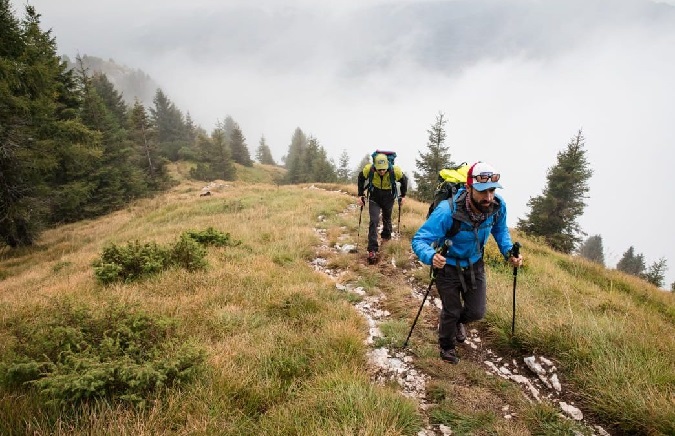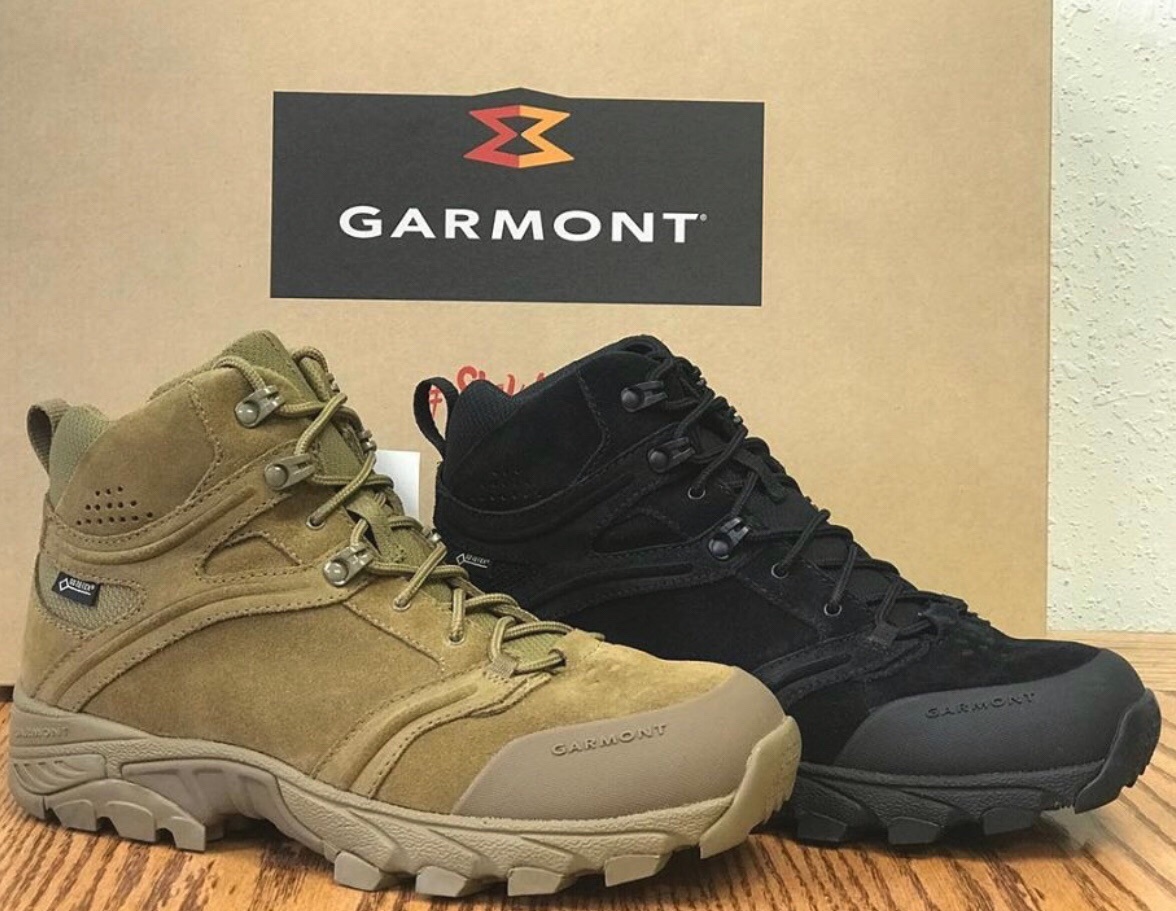There’s a reason that the shoe wall is a dominant feature in just about every outdoor store: As much as we may talk about function and fit, it’s the look of a new shoe that first draws our attention. But while it’s exciting to see all those hiking boots, finding the right match for you can be daunting. While the look of a boot may get you excited, its performance on the trail is ultimately the information you need—and that’s tough to figure out without some help. So before being drawn into all the possibilities on the wall, here’s a quick guide to some of the questions you should be asking yourself to help you find the hiking boots that are right for you.
How Will You Use Them?
Hiking boots are a broad category of shoes that are generally defined by what type of hiking you expect to do. The footwear you use for a day hike in the local forest preserve isn’t the same choice you’d make on a multi-day backpacking trip. Being realistic with how you plan on using these boots will help you narrow things down quite quickly. Keeping in mind that there is a lot of fuzziness between the categories, here are the ways that most hiking boots are defined.
Trail running: The lightest and most comfortable shoes, these are designed for off-road running carrying very little to no weight. Generally low cut and flexible, these shoes are designed for going fast on the trail. They have a slightly stiffer, grippier sole and more stability than a road running shoe, but not by much. Of course, you can find various levels of bulk within this category but the focus is to be very light in weight and well cushioned for the pounding of trail running.
Light Hiking: These shoes, like the Karakum, are typically very versatile and are available in a variety of looks from athletic to classic. As the category name implies these models may only be slightly heavier than trail runners but offer more support, protection, and durability. You will be able to find light hikers in low cut or over the ankle versions, synthetic or leather, waterproof, and breathable non-waterproof. In most cases, the outsoles will be stiffer and more aggressive for better all-condition traction. The nice thing about these shoes is they will perform well on moderate trails and will be wearable for everyday use.
Mid-Level hiking: For this category, you are generally moving up into a high-cut boot that extends over the ankle and offers more support on uneven terrain. Some may be waterproof, but they don’t have to be. The outsole is thicker and more rugged, and the midsole offers less cushioning and more support. You will be fine carrying a light backpack here, but you’ll want to move up a category before taking on a serious load.
Approach shoes: Now growing in popularity because they offer a nice blend of performance and versatility, approach shoes are a good choice for a bit of scrambling, off-trail adventure, and some non-technical climbing. They are designed to fit more closely to the foot giving you a precise, agile and generally more confident feel. Ideal for less predictable terrain. Many shoes in this category can provide support and protection similar to a backpacking boot but in a low-cut design.
Backpacking: Here’s where you’re getting serious about function on the trail. These boots are designed for carrying a heavy pack on a multi-day trip. They are cut high above the ankle for additional support, and the stiffer midsole gives you plenty of protection from trail debris. Of course, this would be overkill on a crushed gravel or wood chip trail, but when you’re hitting the backcountry, this is the type of boot you need. Newer designs are now much lighter in weight compared to the classics.
Mountaineering: These boots are designed for alpine trips. They generally are compatible with crampons and often have insulation to combat the elements. If you’re moving into this category, you probably have a specific trip or activity in mind that requires a stiff, highly supportive boot. Please note, there are all-mountain versions that are lighter and easier to walk in.
What Material Do I Want?
When it comes to the upper of the boot, you have a lot of choices that reflect both the function and aesthetic quality. Knowing a bit about the differences can help you decide which materials are best for you.
Full-grain leather: When you think of a traditional hiking boot, leather is what comes to mind. All-leather uppers are rugged, highly protective, and naturally water resistant. But they do require time to break-in, and they aren’t as breathable as synthetic fabrics.
Leather/synthetic mix: Boots with this mix will combine the best properties of leather with nylon or another synthetic fabric to increase the breathability in the boot. This comes at a cost, however in durability. But it is cheaper, and for those hiking in warmer climates, this is usually a good option.
Nubuck leather: This is full-grain leather that’s been sanded or buffed to resemble suede. It was traditionally made from deer or elk, it but now comes mostly from cattle. You’ll find it is a little more forgiving out of the box than full-grain leather, but it still needs some time to break-in.
Synthetics: Synthetics has become a very large category, with many proprietary fabrics in the mix. These boots are more comfortable out of the box, offer better breathability, and are usually cheaper. So what’s the problem? Durability and support are generally weaker.
Do You Want Waterproof or Breathable?
Waterproof boots sound like something everyone would want, but in reality, the function has its drawbacks as well. A waterproof boot generally uses a membrane to keep the water out, but that means it’s difficult to let air out, and your feet can become clammy. Waterproof technology has gotten better, but once again, your hiking conditions should help you make this decision. In warm conditions, you want a more breathable boot. Water-resistant boots will usually offer enough protection from puddles and rain while providing more breathability.
What Type of Ride Do You Want?
Who wouldn’t want the most cushioned ride possible? While give-me-all-the-cushioning-you’ve-got sounds good in theory, once you get on the trail there are drawbacks that come from a slipper-like feel. The midsole—the layer between the rugged outsole and your foot—is what best determines how the boot will feel to your foot. Highly cushioned shoes, like trail runners, are excellent on flat surfaces when you’re not wearing a pack. But once you add weight and trail debris to the equation, things change. A cushioned shoe will allow you to feel all the sticks and rocks on the trail, possibly causing pain and definitely causing your foot to tire more quickly. A stiffer ride offers more stability and will be much more comfortable in the long run when carrying a pack.
Midsoles are generally made with either EVA (ethylene vinyl acetate) or Polyurethane. EVA is cheaper and offers more cushioning—it’s the stuff you find in running shoes. Polyurethane is stiffer and lasts much longer. As a rule of thumb, the more time you spend on the trail, particularly when carrying a backpack, the stiffer the ride you want. For those who need additional protection from particularly rocky trails, a rigid plate between the midsole and outsole is also available in some models.
How Do They Fit?
OK, you can get into all the technical features of a boot, but ultimately the biggest factor is how it fits. Everyone has a different foot shape, gait, flexibility, etc. Your friend may rave about the hiking boots that have conquered the Appalachian Trail, but that doesn’t mean they’re right for you. Spend a good bit of time trying boots on walking around in them. While the fit is partially personal preference, there are some things that you want to keep in mind.
Toes need wiggle room: You should be able to move your toes around in the front of the boot. You don’t want toes pushing against the front of the boot, which will cause blisters.
Mid-foot to heel should be snug: You don’t want a lot of movement in the foot while you’re wearing your shoes. That, too, will cause blisters. Of course, you can argue about the distance between snug and tight, which you don’t want. But after walking around in them a few minutes, your body is pretty good about noticing the difference.
Look for features that fit you better: Look for unique design elements that may work for you, such as an asymmetrical cuff, which is shorter on the outside of the boot. Some people find this small change can bring additional comfort and support. Does the tongue fit over your foot comfortably? For those who worry about twisting ankles, features like a heel lock can help keep your boots even more secure.
It will be helpful to make up your mind about what you need before you shop. How will you use them? What kind of terrain? What kind of ride to think will work best? What are your material and function preferences? Then take advantage of the knowledge that you’ll find at REI or your outdoor store. Ask lots of questions. The shoe wall may be intimidating at first glance, but the perfect boot is on it somewhere. Once you’re out on the trail, you’ll be happy you put in the effort to find it.
Written by Jeff Banowetz for Matcha in partnership with Garmont North America.
Featured image provided by Garmont North America
Related


